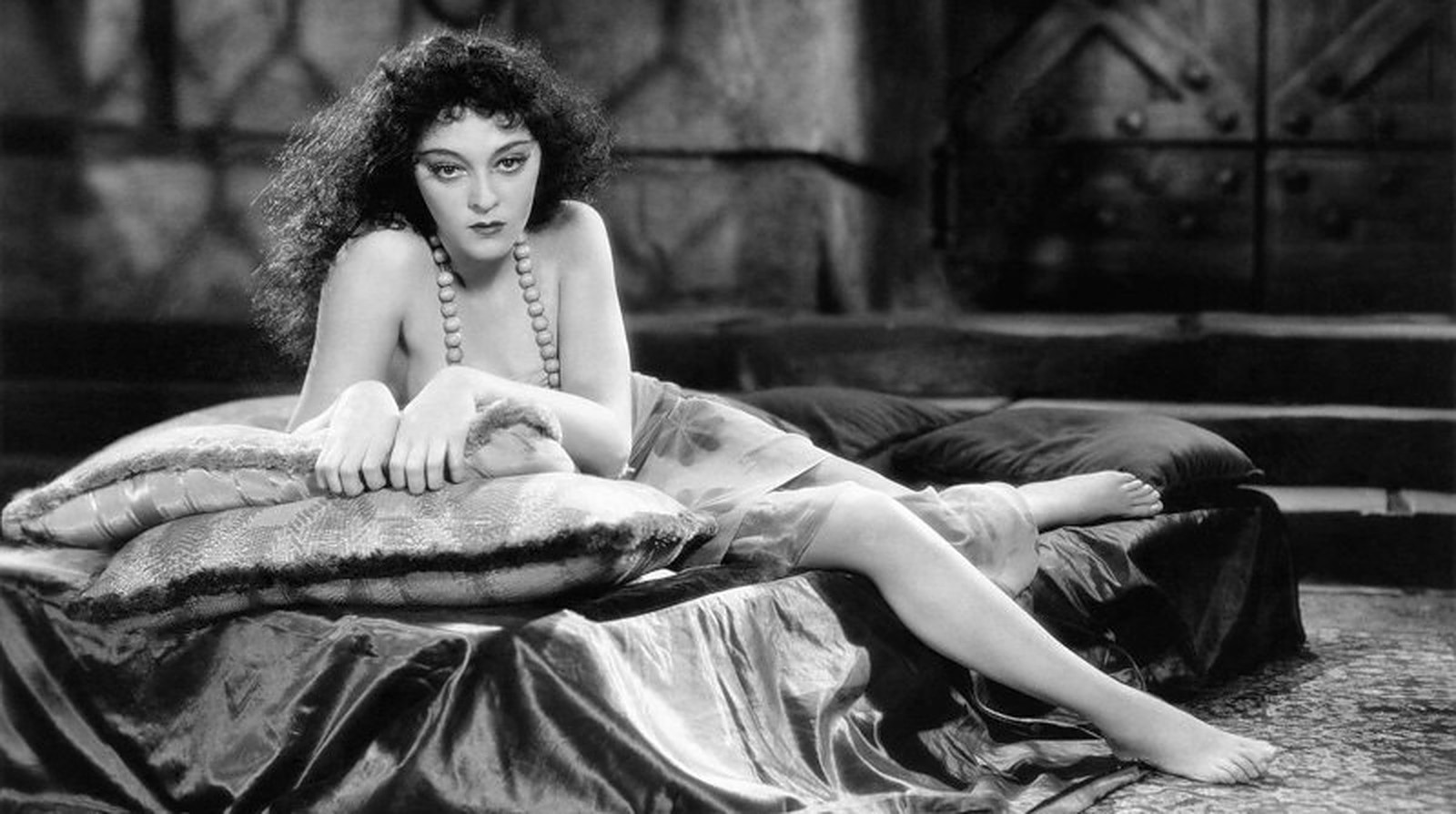
The Island of Lost Souls is a classic movie that has left a lasting impact on audiences since its release. Directed by Erle C. Kenton and released in 1932, this film is a cinematic gem that delves into the depths of human nature, morality, and the boundaries of science. Set on a remote island, the story unfolds as a mad scientist, Dr. Moreau, conducts bizarre experiments on animals, transforming them into half-human, half-beast creatures, known as “the Beast Folk.” As the plot thickens, tension rises, and ethical questions emerge. With a talented cast led by Charles Laughton and Bela Lugosi, the Island of Lost Souls takes viewers on a thrilling and thought-provoking journey. In this article, we will explore 37 fascinating facts about this legendary film, from its production challenges to its cultural impact and enduring legacy.
Key Takeaways:
- Island of Lost Souls” is a classic horror film from 1932, banned in several countries, and known for its groundbreaking makeup and special effects, paving the way for future horror movies.
- The movie challenges traditional notions of humanity, explores the dangers of unchecked scientific experimentation, and continues to captivate audiences with its haunting narrative and enduring impact.
37 Facts about the movie Island of Lost Souls
The movie Island of Lost Souls, released in 1932, is a classic horror film based on the novel “The Island of Dr. Moreau” by H.G. Wells. It tells the story of a mad scientist who conducts gruesome experiments on animals, attempting to transform them into humans.
The movie stars Bela Lugosi as the Sayer of the Law.
Bela Lugosi, known for his iconic portrayal of Count Dracula, plays the role of the Sayer of the Law, a humanoid creature created by Dr. Moreau who recites the rules that the other hybrid beings must follow.
The character of Dr. Moreau is portrayed by Charles Laughton.
Charles Laughton, a renowned British actor, brings a chilling performance to the character of Dr. Moreau, depicting his sinister and twisted scientific pursuits.
The film underwent censorship battles due to its graphic and disturbing content.
Upon its release, Island of Lost Souls faced significant challenges with censorship boards in various countries, who objected to the film’s explicit depictions of animal and human experimentation.
The movie was banned in several countries.
Due to its controversial subject matter, Island of Lost Souls was banned in several countries, including the UK, for its shocking and unsettling scenes.
The film was one of the first horror movies to explore the concept of genetic engineering.
Island of Lost Souls introduced audiences to the idea of unethical scientific experiments, foreshadowing future advancements in genetic engineering and creating a lasting impact on the horror genre.
Island of Lost Souls was a critical and commercial success.
Despite the initial controversies, the film received positive reviews and performed well at the box office, cementing its status as a cult classic in the horror genre.
The movie’s makeup and special effects were groundbreaking for its time.
The transformation scenes of the human-animal hybrids in Island of Lost Souls were considered revolutionary, showcasing impressive makeup and practical effects that added to the film’s eerie atmosphere.
The film inspired numerous adaptations and remakes.
Island of Lost Souls served as a source of inspiration for several subsequent adaptations and remakes, including the 1977 version “The Island of Dr. Moreau” starring Burt Lancaster, and the 1996 version featuring Marlon Brando and Val Kilmer.
The movie has a runtime of approximately 70 minutes.
Island of Lost Souls is a relatively short film, with its concise storytelling and intense sequences maintaining a high level of suspense throughout its duration.
The original negative of the film was thought to be lost, but was rediscovered in 1977.
For many years, it was believed that the original negative of the film was lost or destroyed. However, in 1977, a complete and uncut print of Island of Lost Souls was found, allowing for its restoration and preservation.
Island of Lost Souls was one of the first horror films released under the Hays Code.
The Hays Code, which implemented stricter guidelines for film content, was enforced shortly after the release of Island of Lost Souls. The movie’s portrayal of violence and controversial themes contributed to the decision to establish the code.
The film was banned in several US states upon its initial release.
Due to its disturbing and shocking content, Island of Lost Souls faced censorship issues within the United States as well. Several states imposed bans or demanded significant cuts to the movie before allowing it to be shown to audiences.
The cinematography of the film is praised for its atmospheric and moody visuals.
Island of Lost Souls is often hailed for its haunting cinematography, creating a brooding atmosphere that adds to the sense of unease and dread. The use of shadow and lighting techniques contributes to its captivating and eerie visuals.
The movie raised ethical questions about scientific experimentation and the limits of human knowledge.
Island of Lost Souls delves into the moral implications of scientific pursuits and the potential consequences of tampering with nature. It raises thought-provoking questions about the boundaries of knowledge and the cost of pushing the limits of human understanding.
The film’s script was written by Philip Wylie and Waldemar Young.
Philip Wylie and Waldemar Young collaborated to adapt H.G. Wells‘ novel for the screen, creating a screenplay that captured the dark and unsettling tone of the original source material.
The intense makeup process for the creatures in the film could take several hours.
Transforming actors into the grotesque human-animal hybrids required extensive makeup and prosthetics. The process could take several hours to complete, adding to the authenticity and horror of the film.
The movie includes themes of identity and the struggle for humanity.
Island of Lost Souls explores the concept of identity and the inner struggle faced by the hybrid beings created by Dr. Moreau. It delves into the question of what truly defines a human and the lengths one would go to maintain their humanity.
Island of Lost Souls features a haunting and atmospheric musical score.
The film’s score, composed by Arthur Johnston and Hans J. Salter, enhances the overall eerie and suspenseful atmosphere, adding to the tension and enhancing the viewer’s experience.
The movie showcases strong performances by its ensemble cast.
In addition to Bela Lugosi and Charles Laughton, the cast of Island of Lost Souls delivers standout performances, bringing depth and complexity to their characters and contributing to the film’s overall effectiveness.
The film’s sets and production design are considered visually stunning.
The elaborate sets and production design in Island of Lost Souls create a unique and visually captivating world, immersing viewers in the dark and disturbing realm of Dr. Moreau’s island.
The movie explores themes of power and control.
Island of Lost Souls delves into the theme of power dynamics, examining the exploitative nature of Dr. Moreau’s control over the hybrid beings and the consequences of unchecked authority.
Island of Lost Souls was deemed too shocking for audiences during its initial release.
The graphic and disturbing nature of the film led to mixed audience reactions upon its release, with some finding it too unsettling and horrifying to watch.
The movie’s dark and twisted narrative continues to captivate audiences today.
Despite being released almost 90 years ago, Island of Lost Souls remains a cult favorite among horror fans, known for its chilling storyline and thought-provoking themes.
Island of Lost Souls paved the way for future horror films.
The film’s impact on the horror genre cannot be overstated. Its exploration of scientific experiments gone wrong and the blurred lines between humans and animals set a precedent for many future horror films.
The film was a precursor to the creature feature subgenre.
Island of Lost Souls is often credited as one of the earliest examples of creature feature films, which focus on showcasing monstrous and terrifying creatures as central elements of the plot.
The movie has been praised for its social commentary.
Island of Lost Souls, beneath its horror elements, offers a commentary on societal issues and human nature, addressing themes such as animal rights, scientific ethics, and the dangers of unchecked ambition.
Island of Lost Souls has inspired numerous artistic interpretations and references in other media.
The film’s influence extends beyond the realm of cinema, with its iconic imagery and themes serving as inspiration for various artistic endeavors, including music, literature, and visual arts.
The movie showcases impressive practical effects.
Island of Lost Souls relied heavily on practical effects, emphasizing the physicality of the creatures and adding to the film’s realism and horror. These effects continue to impress audiences today, even in an era dominated by CGI.
Island of Lost Souls addresses the dangers of playing God.
Dr. Moreau’s relentless pursuit of scientific knowledge without regard for ethical considerations serves as a cautionary tale, highlighting the potential consequences of tampering with the natural order of life.
The film’s adaptation of H.G. Wells’ novel deviates from the source material.
Island of Lost Souls takes certain liberties with the original novel, focusing more on the horror elements and emphasizing the moral dilemmas surrounding Dr. Moreau’s experiments.
The movie’s haunting imagery continues to leave a lasting impact on viewers.
The scenes and visuals depicted in Island of Lost Souls have stood the test of time, creating a lasting impact on those who watch the film, long after its initial release.
Island of Lost Souls challenges traditional notions of humanity.
The concept of human-animal hybrids created by Dr. Moreau forces viewers to question what it means to be human and to contemplate the blurred boundaries between species.
The film’s themes of isolation and confinement add to its unsettling atmosphere.
The isolated nature of Dr. Moreau’s island and the confinement of the hybrid beings contribute to the sense of claustrophobia and unease that permeates throughout Island of Lost Souls.
Island of Lost Souls remains a testament to the enduring power of classic horror.
The film’s ability to still captivate and disturb audiences today is a testament to its status as a classic of the horror genre, showcasing the timeless appeal of well-crafted scares and thought-provoking storytelling.
Island of Lost Souls serves as a cautionary tale about the consequences of unchecked scientific experimentation.
The film’s narrative serves as a warning, highlighting the potential dangers and ethical dilemmas that arise from unethical scientific practices and the pursuit of knowledge at any cost.
The movie’s enduring popularity led to its preservation and restoration.
Thanks to its dedicated fanbase and recognition as a significant film in the horror genre, efforts have been made to preserve and restore Island of Lost Souls, ensuring its availability for future generations of movie lovers.
Conclusion
Island of Lost Souls is a classic movie that has captivated audiences for decades. With its thrilling storyline, exceptional performances, and stunning visuals, it has cemented its place in cinematic history. This article has explored 37 fascinating facts about the movie, shedding light on its production, behind-the-scenes anecdotes, and its enduring legacy.From the controversial themes to the groundbreaking makeup effects, Island of Lost Souls pushed boundaries and showcased the talents of its cast and crew. The film’s exploration of the fine line between humanity and monstrosity continues to resonate with audiences, making it a timeless piece of cinema.Whether you are a fan of horror movies, a lover of classic films, or simply curious about the history of cinema, Island of Lost Souls is a must-watch. Its impact on the genre and its influence on subsequent films cannot be understated. So grab some popcorn, dim the lights, and immerse yourself in the dark and intriguing world of Island of Lost Souls.
FAQs
1. When was Island of Lost Souls released?
Island of Lost Souls was released on December 1, 1932.
2. Who directed Island of Lost Souls?
The movie was directed by Erle C. Kenton.
3. Who were the main cast members?
The main cast members of Island of Lost Souls included Charles Laughton, Bela Lugosi, and Kathleen Burke.
4. Is Island of Lost Souls based on a book?
Yes, the movie is an adaptation of the 1896 novel “The Island of Doctor Moreau” by H. G. Wells.
5. What is the premise of the movie?
Island of Lost Souls follows a shipwrecked man who finds himself on an island ruled by a mad scientist experimenting with the boundaries of human and animal DNA.
6. What was the controversy surrounding the movie?
The movie faced backlash due to its disturbing themes and graphic content, leading to censorship and bans in various countries.
7. How was the makeup for the characters created?
The makeup for the characters, particularly the iconic “Beast Men,” was created by makeup artist Wally Westmore.
8. Did the movie receive critical acclaim?
While it received mixed reviews upon its release, Island of Lost Souls has gained a cult following over the years and is now regarded as a classic horror film.
9. What is the legacy of Island of Lost Souls?
The movie’s influence can be seen in subsequent horror films and its exploration of ethical and scientific dilemmas continues to resonate with audiences.
10. Where can I watch Island of Lost Souls?
The movie is available on various streaming platforms and can also be purchased or rented through online retailers.
Island of Lost Souls' enduring legacy continues inspiring filmmakers, much like Glenn Miller's timeless tunes from the 1930s. H.G. Wells' visionary storytelling shines through this adaptation, raising thought-provoking questions. Mad scientist tropes, popularized by works like Mary Shelley's Frankenstein, find haunting expression here. Uncover more captivating facts across diverse topics, from music history to literary icons.
Was this page helpful?
Our commitment to delivering trustworthy and engaging content is at the heart of what we do. Each fact on our site is contributed by real users like you, bringing a wealth of diverse insights and information. To ensure the highest standards of accuracy and reliability, our dedicated editors meticulously review each submission. This process guarantees that the facts we share are not only fascinating but also credible. Trust in our commitment to quality and authenticity as you explore and learn with us.


